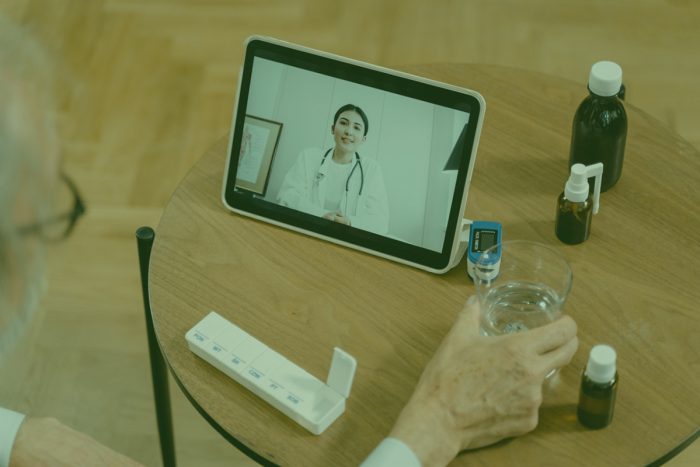The concept of “patient engagement” continues to radically evolve. For pharmaceutical and other life science companies, digital patient engagement involves leveraging digital tools, platforms, techniques, and strategies to drive desired outcomes. These outcomes extend beyond merely the business bottom line, as the problems in a regulated industry like pharma are more complex. Aside from revenue, other critical outcomes include patient satisfaction, compliance, health outcomes, and efficiency. Some examples of the tools used to drive digital patient engagement include the electronic patient health records that facilitate positive health outcomes, patient satisfaction, and compliance, as well as payment systems and even digital patient intake, which can drive efficiency.
Why the focus on digital? For the healthcare community to better serve patients, it needs to be present wherever patients can be found. The growth of mobile device usage and widespread internet access expands the reach providers have, while also giving consumers 24/7 access to information and services around their healthcare. In fact, patients now play more of a role in their own healthcare than ever before. Patients and their close loved ones use tools like the internet to perform tasks such as comparing physicians and providers, whereas in the past patients chose their provider based primarily on geographic proximity.
Patients who are actively engaged in their healthcare see better outcomes, which has been confirmed by multiple research reviews over the past couple of decades. In fact, there is a clear change that is trending among healthcare consumers. Patients are actively seeking out knowledge and empowering themselves about their health options. They are holding the healthcare system more accountable while demanding more control over their healthcare and seeking out personalized health solutions.
Patients are also actively seeking out healthcare solutions that work within their lifestyle and give them maximum flexibility and choices. This was an already existing trend contributing to the growth of telehealth and telemedicine, which COVID-19 has only accelerated. Because of the pandemic, face-to-face engagement rapidly decreased, and ignited the need for a replacement; this void was filled by digital engagement, which has been delivering enhancements of its own to the healthcare system. Now there is a heightened emphasis on digital engagement among clinicians and patients alike, to where healthcare consumers are not just accepting the transition to telehealth services and digital information access—they expect it.
The Importance & Benefit of Digital Patient Engagement

Digital patient engagement brings independence from logistical constraints that often reduce face-to-face interaction into a challenge. Digital engagement allows for expedited patient communication in real-time, reduced manual workload through various levels of automation, and better-informed decision-making by patients about their own care.
An important note here is that automation does not simply mean automatically performing the same task repeatedly, as in colloquial “automation.” Digital patient engagement removes the need for manual input and record-keeping; providers can type or speak their notes into a patient’s history, which is directly shared with their care team and even the patient. Automation comes into play in that built-in shared access, as well as in potential reminders and contextual prompts that can guide individuals towards more information.
Digital patient engagement allows for improvements in meeting patient needs, both through smoother delivery of services and information as well as through more opportunities to gather feedback. These improvements drive better patient outcomes and adherence, which in turn spells out better value for payers.
The value extends into predictive potential for better long-term decision-making. With real-time data, companies can make predictions around where people will likely face behavioral challenges. Regimens may be adjusted accordingly in order to prevent patients from falling off their treatment.
Patient-generated health data may actually be leveraged to gain direct insights into the patient experience, and understand what measures may be taken—as well as how or when these may be taken—in order to improve the patient experience and their outcomes.
The fact that digital patient engagement is not just mobile-friendly but mobile-first means that access is given to patients 24/7, granting them the ability to take the steps they need to pursue their health questions or adhere to their providers’ recommendations. Patients can do this in whatever environment gives them privacy or otherwise works for them, using the same technology that they already use in other aspects of their lives. This empowers patients to access healthcare seamlessly.
Digital tools allow companies to segment consumers based on their individual risk factors and other characteristics, like age, gender, height, weight, diet, and even family history. The potential for reliable and accurate statistical analyses around these factors is also increased since there is more data available to look at and helps generate better personalized experiences which can be further fine-tuned when individuals set their own preferences. Personalized medicine enables earlier intervention, more accurate diagnoses, more effective drug therapies, more customized treatment options, better outcomes and even higher rates of patient satisfaction.
Digital Patient Engagement Elements

What are the specific elements by which digital patient engagement is put into practice? Mobile-first experiences that create more access points while also gathering appropriate data; responsive advertisements and websites; and even digital health apps are some of the various tools that can be leveraged as part of digital patient engagement.
Consumers who enroll in digital patient support programs expect interactiveness and feedback as part of their personalized experience. These health consumers want timely solutions that they can use to directly impact their health. A website with static content around their treatment options will not cut it in terms of efficacy or even trust. Health consumers expect their sources of care to be up to date, which they now expect to be evident in content delivery and communication—and not just in the information itself. Personalized support services are both the present and the future of healthcare, resulting in greater adherence and improved outcomes.
As we have recounted, digital patient intake can help improve the internal workflow by automating it and standardizing the information that is collected. This streamlines the pre-visit processes for convenience and efficiency, while also boosting efficacy. Digital tools not only benefit all stakeholders, but they are adaptable to each user and interactive with each other.
Personalized interfaces and surfaces may present some risk or challenges. While the diminishing number of skeptics may continue to point to these risks as reasons to postpone digital patient engagement, the reality is that solutions are constantly being improved in order to mitigate and prevent these challenges. The common types of risks may include some data and privacy concerns, as well as limitations that may result in situations where providers or patients may have a lack of digital capabilities. The latter is being addressed as digital adoption grows, while the former is becoming less of an issue as digital technologies grow more sophisticated.
How Good Apple Can Help
Good Apple is focused on the pharmaceutical and life sciences space, and so we have the tools and analytics to derive invaluable, specialized consumer insights. We have the expertise to navigate federal regulations while still innovating. We do the research that removes the guesswork from reaching target audiences. We are experts in which platforms to use and how to adapt messaging to resonate with each of your target demographics or even geographical groups.
We bring years of Good Apple experience during which we have made major innovations and helped our clients achieve many industry firsts. We have had years of successes with major life sciences companies, and along the way gathered extensive industry knowledge.
We are the experts who can maximize your ad effectiveness and reach and maximize your overall ROI through ad strategies that have been proven to work. For all our clients, allocating business dollars effectively is a top priority. We advise on this and together create a custom strategy that maximizes what you achieve with your budget.
Our industry experience also means that we can provide the best advice regarding what other agencies or experts you should work with. We regularly partner with other award-winning agencies to provide a full-service experience meeting the needs of our clients.
Here at Good Apple, we consult clients from start to finish on the best digital engagement practices and the most effective strategies to advertise their services.

